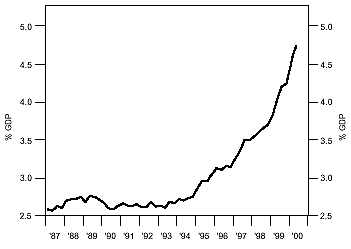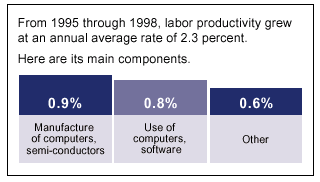Having kids has been a wonderful experience for me and having kids have kids is supposed to be even better. I have my doubts about that though, although you grandparents will be the first to pounce on me for ever doubting that a once a week, in and out visit to see little granddaughter Darla could be anything other than sheer ecstasy. The reason I question it is that parenting to me has always seemed like one of the most selfish acts in the world. We have children to recreate ourselves and the consequences are blocked out as if we had been administered general anesthesia five minutes before conception. It’s only much later that we say to our closest friends, “you know, I can’t remember why I wanted to have kids.” Other than the genetic drive for duplication, my only explanation is that we were brain dead at the time of conception due to that anesthetic, or maybe it was just lots of grain alcohol.
So with genetic duplication being the raison d’etre for parenthood, I have even stronger doubts about grandkids, because instead of being ½ me, they’re only ¼ me, and as long as I’m going to suffer, I might as well suffer with as “full strength” me as possible. Ah, but that’s where you’re wrong, you grandparents will respond – there’s no suffering at all. You pick ‘em up, put ‘em back down and then ditch out the door an hour later. If it were only that simple. Because for 59 of those 60 minutes (the remaining minute being relegated to “How are you feeling Dad” and lining up the next babysitting appointment) you have to do the “déjà vu all over again” bit that your kids somehow think is a first time virginal experience for the world. I’m not sure I’m prepared, for instance, to hear how little Darla was 8 lbs 6 ozs at birth and has already outgrown those sleeper outfits we gave her at the baby shower. And then there will be little Darla’s first few words to endlessly discuss, her first little tooth, and of course, those first few steps which will inevitably come at a very early age, indicating extreme intelligence and supernormal coordination. By far the most excruciating conversation, however, will likely be the one that features baby’s “percentiles.” Darla’s height will be in the 95 th percentile and her weight in the 98 th. I’ve never heard of a baby being in the 40 th percentile of anything unless it was the size of its recently released load in its diapers, and even that, I’m sure, is worth exaggerating. Why, according to their parents, even future dwarfs command the 51 st percentile in height for at least their first few years.
So when it comes to grandchildren, put me in the “been there, done that” camp. If I’ve got to put up with the percentile psychobabble one more time, it should at least have my nose, my eyes, and my DNA. Having children I suppose, truly is a miracle, but repeating the process through your grandchildren is an act of self-flagellation. After 50, instead of creating a life, it’s time to get a life. There’s a difference you know.
Now that we’re on the topic of miracles, let’s talk about the economic miracle of the past decade – the booming of the markets, the maintenance of low inflation, and the apparent acceleration of GDP growth based upon a productivity boom that has been technology led. In a nutshell, let’s talk about the New Age Economy (NAE). But defining the NAE is one thing, explaining its birth and maturation is another – sort of like viewing little Darla’s accomplishments through the eyes of an adoring parent, or a “had enough” grandparent. Politicians would have you believe that the miracle was mainly of their own creation – tax hikes to create government surpluses, foreign affairs policies to protect the peace, etc., etc. But that’s a parent talking, or better yet a parent looking for a legacy in the case of Bill Clinton or a parent looking to have another kid in the case of Al Gore. The fact is that the NAE has been a function of three primary forces, none of which had much to do with the public sector. They are:
- Favorable global demographics which have encouraged savings and investment in anticipation of retirement years, 10-15 years hence.
- Globalization, which has promoted freer, cheaper, and therefore more prosperous trading between nations despite a virtual standstill in governmental trade policies over the past 5 years.
- The CHIP.
Each of these three secular phenomena deserves a place on the victory stand when taking credit for the NAE. Politicians in this Olympian metaphor I suppose are akin to the coaches – they might have put in lots of hard work behind the scenes but they weren’t out there grinding it out on the track. The three secular athletes cited above are the ones with the bronze, silver and gold medals draped around their necks.
My point in making the distinction is to first give credit where credit is due, but secondly to suggest that if the NAE is vulnerable to a slowdown or heaven forbid, temporary reversal (read “recession”), then it is one of these three areas where we should look for vulnerabilities. Granted, there are other ways to derail the NAE – and we at PIMCO have spoken to them in our Secular Forums past. But they all revolve around the delicate fabric of finance which provides the fuel for the above three secular phenomena: interest rates, debt levels, financial accidents alá the Russia/LTCM crisis in 1998, etc. These are critical but I’ll save further discussion of them for another day and another Outlook. Likewise, there is not enough space to discuss the rather glacial processes of demographics and globalization. Let’s for the moment assume status quo for these two medal winners and by elimination, focus on the third: THE CHIP.
The CHIP of course is synonymous with technology and virtually any type of investment, be it hardware or software, that has lifted our “used to be” economy into another orbit, now known as the NAE. But this new orbit has come with questions as to sustainability. Does New Age technology have the thrust and the staying power of other historical growth-boosting innovations such as electricity, or is it a one stage rocket, temporarily soaring but destined to fall back to earth? I myself, technological idiot that I am, have posed what I consider to be the ultimately critical question on TV and in frequent meetings with clients at Newport Beach: “Is the acceleration in productivity and therefore growth in this NAE due to the purchase of computers or the use of computers?” While the firsthand response might be to equate the two as one in the same, the distinction is actually critical. The chart below shows the dynamic thrust of technology, chip-related investment that has taken place during the decade of the 90s.

Source: ISI
We have purchased CHIPs at a level equivalent to nearly 5% of GDP and those purchases have had a significant impact on productivity, growth, inflation and any other critical economic statistic you care to name. An increase in technology spending would logically increase GDP, as long as it continues to accelerate, but because the chip, computers, and technology in general have been so productive themselves – more and more powerful, faster and faster, cheaper and still cheaper, their purchase as distinguished from their use has been significant in holding down inflation and generating the “feel good,” fault free aura of the NAE itself. Look at it this way: if we did nothing in our economy but produce more powerful and faster computers, then we would have 15-20% GDP growth and deflation in the same range. Not a bad combination if you ask me.
But the purchase of computers has got to actually lead to something other than high hopes if the miracle is to continue. That is, their use has got to lead to something dynamically different in the way we do things or else we’re just talking about a glorified version of fun and games here, sort of like Pong leading to Pac Man, leading to EverQuest. After awhile, unless the use of computers allows an economy to accelerate into another more productive orbit, there is no miracle, there’s only a niftier version of Pong to show for it all.
A recent column in the New York Times by Louis Uchitelle casts some light on this critical question. From 1995 to 1998, according to the Bureau of Labor Statistics, more productivity growth, and therefore more GDP growth, has come from the manufacture and purchase of technological equipment than from the use of that equipment.

Source: The Bureau of Labor Statistics
According to this chart, if we stopped making new chips and computers the implementation and integration of all previously produced chips would have produced productivity growth near long term historical averages of 1.5% – not 2.5% which is the basis for believing in our New Age economic miracle. Well, we’re not gonna stop making new computers are we? No, of course not, but if the NASDAQ downdrafts and junk bond/venture capital financings become less available, then the manufacture and purchase of technology will undoubtedly suffer.
What we may suddenly experience is the first cyclical downdraft of our New Age secular economy, leading to questions and perhaps shakeups in a number of different, near axiomatic, New Age presumptions. For the past half decade or so, investors have “presumed” that it is OK for the U.S. to be running on empty when it comes to our internal savings’ rate because the rest of the world would be more than glad to supply us with any and all capital we required to finance our balance of payments deficit. Investors have “presumed” that historically high P/E ratios were justified based upon a permanently higher level of productivity. Investors have “presumed” that our internal currency – the dollar – would thrive and remain strong because U.S. productivity was so much better than Europe or Japan. Investors have “presumed” the availability of continued debt financing to less than investment grade companies and credits because technological productivity would help them grow out of their leverage.
But what if their presumed productivity miracle was in part a mirage? What if much of it was simply a cyclical bit of capitalistic excess that allowed investors to believe in miracles when they should have been hunkering down for more earthly realities? What if, what if? But aside from the ifs, there are some things I believe very strongly. I believe in Pac Man and the Net. I believe in Napster and AOL. I believe in B to C, B to B, and B to anything that has or will own a computer in the future. I don’t, however, believe in miracles, whether they’re described as grandchildren or New Age economics. I believe we should stand by and be on the alert for the winter winds of economic and investment change.
William H. Gross
Managing Director
